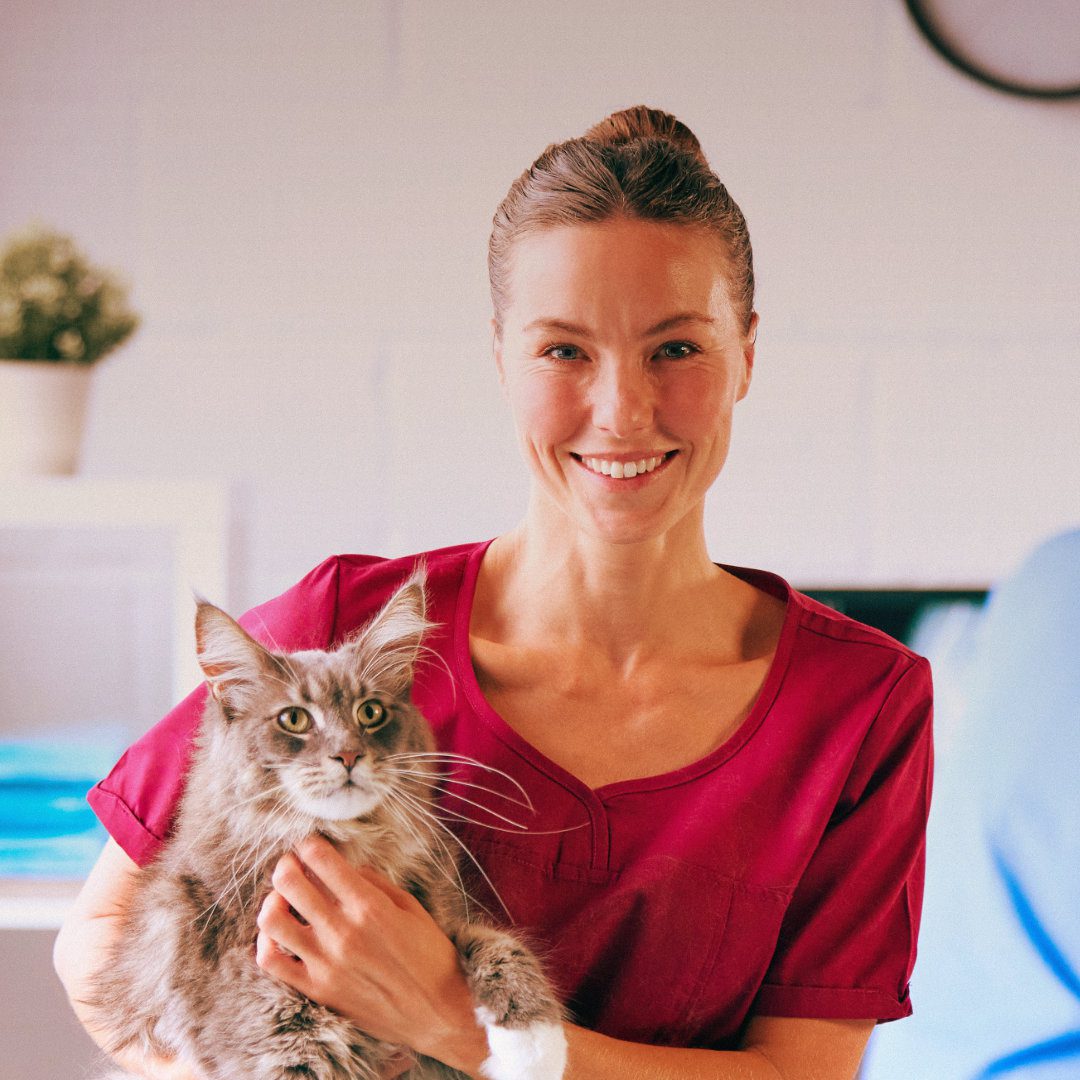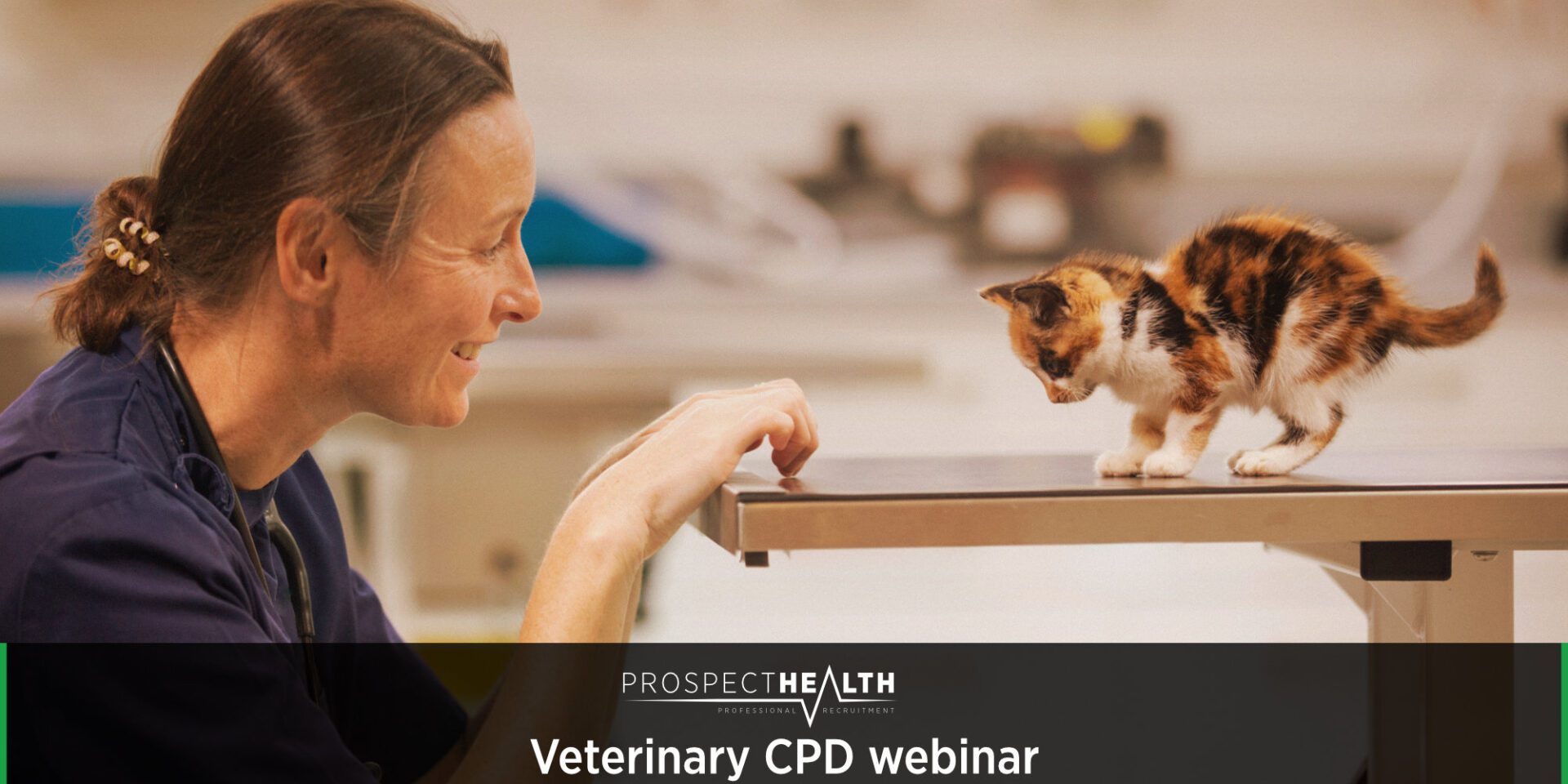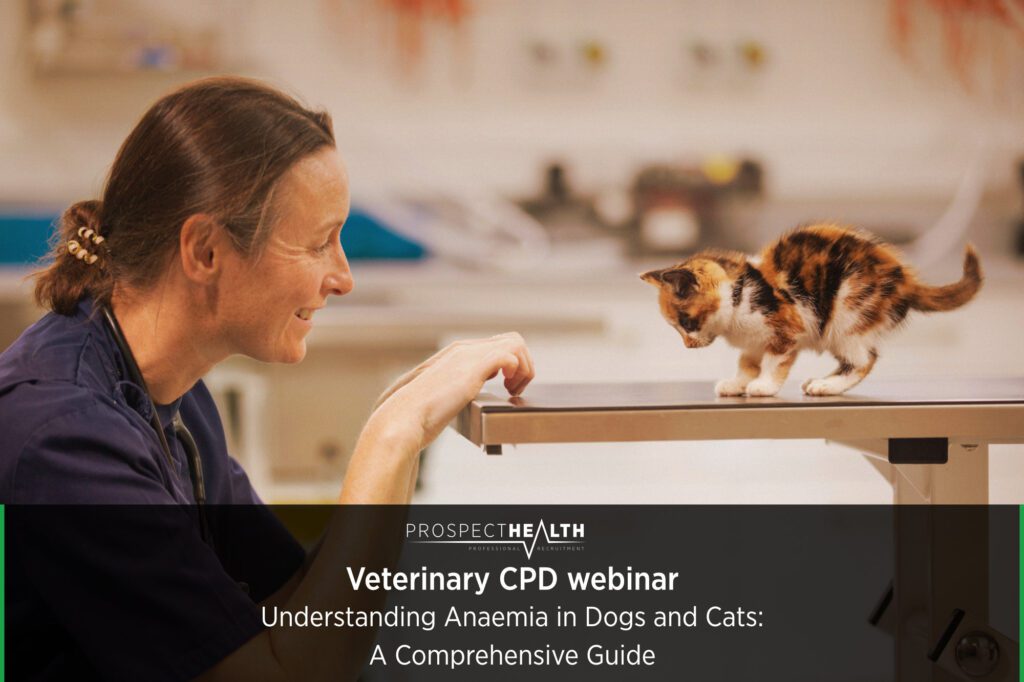October 28, 2025 | Vet Student | Veterinary
Veterinary CPD webinar
Understanding Anaemia in Dogs and Cats: A Comprehensive Guide
By Stephanie Mitze
Anaemia is a common finding in veterinary practice, and understanding it is crucial for accurate diagnosis and treatment. While it can sometimes be the primary reason a pet is brought to the clinic, it often serves as a signal of an underlying health issue.
In this webinar, Dr Stephanie Mitze demystifies anaemia and helps you understand the common causes, presentations and diagnosis.
If you would like to receive a copy of the webinar recording and be added to our mailing list for future webinars, please complete the form below.

Access our pre-recorded Veterinary Webinars
What is Anaemia?
Anaemia occurs when there is a decreased red blood cell mass in the body, which can be measured by low haemoglobin, haematocrit, or red blood cell count. In dogs and cats, non-regenerative anaemia is more common than regenerative anaemia. Severity matters; a mild anaemia may be incidental, while severe anaemia can significantly impact prognosis.
Causes of Anaemia
There are three main mechanisms:
- Decreased production – When the bone marrow isn’t producing enough red blood cells.
- Increased loss – Blood loss from trauma, gastrointestinal bleeding, or parasites.
- Decreased lifespan – Premature destruction of red blood cells, often due to haemolysis.
How Anaemia Presents
Symptoms often reflect reduced oxygen delivery:
- Pale gums and mucous membranes
- Weakness and fatigue
- Exercise intolerance
- Rapid breathing or heart rate
- Pica (abnormal eating habits) in chronic cases
- Sudden collapse or loss of appetite in severe cases
Diagnosing Anaemia
Diagnosing anaemia requires a careful, stepwise approach:
- Confirm anaemia: Laboratory machines can be inaccurate. A fresh blood smear is invaluable for examining red blood cell shape, inclusions, and evidence of regeneration or destruction.
- Determine type:
- Regenerative: Bone marrow responds appropriately, usually due to blood loss or haemolysis.
- Non-regenerative: Bone marrow fails to produce enough red blood cells, which may be caused by chronic disease, nutrient deficiencies, or bone marrow disorders.
- Assess red blood cell indices: Tools like MCV, MCHC, and RDW help classify anaemia as microcytic, macrocytic, hypochromic, or normochromic.
- Investigate underlying causes: Comprehensive diagnostics may include blood chemistry, urinalysis, imaging, infectious disease testing, iron panels, vitamin levels, and occasionally bone marrow evaluation.
Common Types of Anaemia
- Regenerative anaemia: Often due to bleeding or haemolysis. Reticulocytosis (immature red blood cells) indicates bone marrow response.
- Non-regenerative anaemia: Can result from chronic inflammation, iron deficiency, nutrient deficiencies, kidney disease, or bone marrow suppression.
Treatment and Management
- Treat the underlying cause whenever possible.
- Blood transfusions may be needed in severe anaemia.
- Supportive therapies may include iron supplementation (if deficiency is confirmed), EPO-stimulating agents, vitamins, and medications for immune-mediated anaemia.
- Always monitor for complications such as hypercoagulability or secondary organ involvement.
Key Takeaways
- Anaemia is rarely the primary disease; it often signals an underlying problem.
- Thorough characterisation of anaemia is crucial for correct diagnosis and effective treatment.
- Always consider species, breed, age, and individual variation when interpreting lab results.
Understanding anaemia allows veterinarians to see beyond the numbers and address the root causes, improving outcomes for pets.
If you’re looking to move roles after graduation or if you’re looking for a role once you graduate our team can help
You can call us on 01423 813453 or email us at [email protected]
View all our Veterinary Jobs

Next Up: Veterinary CPD webinar
Imposter Syndrome in the Veterinary Profession: What It Is and How to Tackle It
Starting a veterinary career can be exciting, but it often comes with hidden challenges. One of the most common, yet least talked about, is imposter syndrome. Many vet students and new graduates find themselves questioning their abilities, doubting their success, and living in fear of being “found out” as a fraud, despite clear evidence of their competence.
In our most recent webinar, Dr Kyle, a resident in veterinary anaesthesia, explored this important topic and shared insights on how imposter syndrome shows up in our profession and, more importantly, how to manage it.

Talk to a specialist
Chris Ellerker
Divisional Director – Dentistry and Locum Vet Divisions
I have over 12 years of recruitment experience, working my way up from Candidate Resourcer, Recruitment Consultant, Business Manager, to Divisional Director. I manage/run our Dentistry and Locum Vet teams here at Prospect Health. I thoroughly enjoy finding candidates a rewarding position that meets their expectations and supporting them through the process of registration/compliance (the fun bit), as well as throughout their placement/booking…
October 28, 2025 | Vet Student | Veterinary



